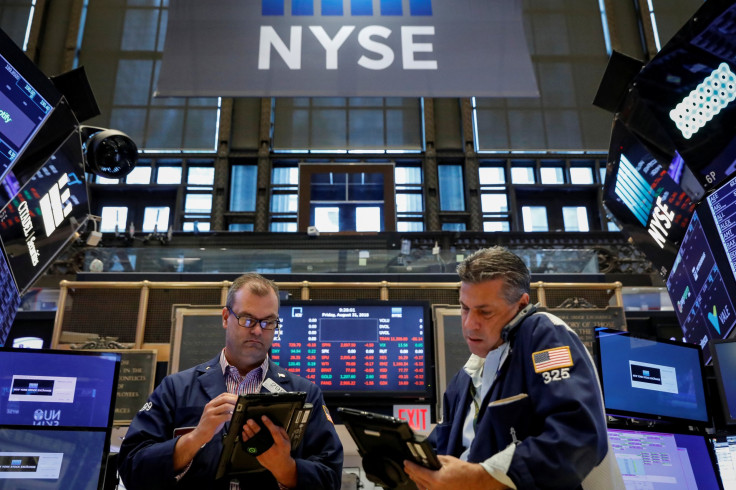Friday's Stock Market Close: US Equities Rise, Set New Highs, On Good Economic Data In China, US

KEY POINTS
- China GDP expanded by 6.1% last year
- U.S. manufacturing output rose by 0.2% in December
- U.S. housing starts rose 16.9% in December
U.S. stocks rose Friday, reaching new record highs, on some strong economic data from China and the U.S.
The Dow Jones Industrial Average gained 49.44 points to 29,347.08 while the S&P 500 climbed 12.61 points to 3,329.42 and the Nasdaq Composite Index gained 31.81 points to 9,388.94. All three benchmarks set new closing highs. For the week, the Dow rose 1.8%.
Friday’s volume on the New York Stock Exchange totaled 2.92 billion shares with 1,513 issues advancing, 336 setting new highs, and 1,416 declining, with seven setting new lows.
Active movers were led by NIO Inc. (NIO), Advanced Micro Devices (AMD) and Aurora Cannabis (ACB).
China said its economy expanded by 6.1% last year, down from a revised 6.6% rate for 2018, but still in line with expectations.
The Beijing government had targeted growth of 6% to 6.5% for 2019. China's official statistics bureau described the economy as being "generally stable" last year.
John Woods, chief investment officer for the Asia Pacific at Credit Suisse, told Bloomberg that China’s industrial production “is quite telling, because more broadly it speaks to the bottoming out in the global industrial-production cycle, which we’ve been looking for and the market’s been looking for the last six to nine months.”
Woods added this suggests “the global economy is on a recovering path.”
U.S. manufacturing output rose unexpectedly by 0.2% in December, following a downwardly revised 1.0% increase in November. Overall industrial output fell by 0.3% in December after a downwardly revised gain of 0.8% in November.
Economists had expected both overall industrial output and manufacturing output would fall 0.2% in December.
Capacity utilization fell to 77% in December from an upwardly revised 77.4% in November.
U.S. housing starts rose 16.9% in December to an annualized rate 1.61 million after an upwardly revised 1.375 million figure in the prior month.
However, building permits fell 3.9% to 1.42 million in December.
The University of Michigan consumer sentiment index fell to 99.1 in January down from 99.3 in the prior month.
Federal Reserve Bank of Philadelphia President Patrick Harker said the U.S. economy is in good shape.
“My outlook for the economy is positive, but let me add that my outlook will continue to be driven by the data as each report is released throughout 2020,” he said on Friday.
Kristalina Georgieva, Managing Director of the international Monetary Fund said in a speech on Friday in Washington that: “Stability will remain a challenge in the decade ahead. In the 2020s, the financial sector will have to grapple with preventing the traditional type of crisis, and handle newer ones, including climate related shocks. Think of how stranded assets can trigger unexpected loss. Some estimates suggest the potential costs of devaluing these assets range from $4 trillion to $20 trillion.”
“Risk assets are off to a good start in 2020,” said Gregory Faranello, head of rates at AmeriVet Securities. “Returns last year were off the charts. But when you factor in the late 2018 market corrections across both equities and credit, things look less stellar.”
Overnight in Asia, markets finished higher. China’s Shanghai Composite edged up 0.05%, while Hong Kong’s Hang Seng jumped 0.6%, and Japan’s Nikkei-225 rose 0.45%.
In Europe markets closed broadly higher, as Britain’s FTSE-100 surged 0.85%, France’s CAC-40 jumped 1.02% and Germany’s DAX gained 0.72%.
Crude oil futures gained 0.29% at $58.69 per barrel and Brent crude inched up 0.2% at $64.98. Gold futures advanced 0.38%.
The euro slipped 0.4% at $1.1092 while the pound sterling fell 0.49% at $1.3014.
The yield on the 10-year Treasury rose 1.49% to 1.836% while yield on the 30-year Treasury gained 1.55% to 2.296%.
© Copyright IBTimes 2025. All rights reserved.





















